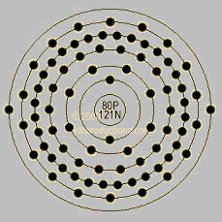Global warming is an increase in the average temperature of the Earth's atmosphere, especially a continual increase great enough to change the global climate. The Earth has experienced many periods of global warming throughout its history, and currently appears to be undergoing such warming. This is caused by increased levels of greenhouse gases. I believe that humans have greatly increased the levels of greenhouse gases due to industry and agriculture.
The carbon dioxide concentration in the atmosphere has risen from 290 parts per million in 1865 to about 360 parts per million in 1995, as a result of humans burning fuel. But has this affected the global temperature? Over the past 100 years, the Earth has warmed by about 1ºF, and experts have concluded that it has been a result of the increased concentration of carbon dioxide in the air.
In 1997, more than 160 nations met in Kyoto, Japan, to discuss limitations on greenhouse gases. The result of the meeting was the Kyoto Protocol, in which the nations agreed to limit their greenhouse gas emissions, relative to the levels emitted in 1990. The United States agreed to reduce emissions from 1990 levels by 7 percent during the period 2008 to 2012. The nations included in the Kyoto Protocol were, but are not limited to:
Saudi Arabia - Czech Republic - Iran - Ireland - Israel - Denmark - Italy - Australia - Japan - South Africa - Dominican Republic - Netherlands - Spain - New Zealand - Egypt - Kenya - Sweden - Kuwait - Nigeria - Switzerland - Belgium - Thailand - Norway - Pakistan - Bolivia - Finland - Turkmenistan - Brazil - France - Peru - Ukraine - Germany - Cambodia - Poland - United Kingdom - Portugal - Canada - United States of America - Chile - China - Russian Federation - Venezuela - Costa Rica - Vietnam - Hungary - Cuba - Iceland
The effects of global warming if no actions are taken are catastrophic. A change of even a few degrees in the global temperature could cause dramatic changes in all climate zones.
- The sea level would rise faster, destroying coastal areas.
- There would be more occurrences of heat waves, droughts and wildfires.
- Extreme storms and floods.
- Wider spread of infectious diseases like malaria.
- Some scientists have recently predicted that 25% of existing species could go extinct by 2050 if global warming is not quickly curbed.
- The Arctic Ocean could be free of ice by the summer of 2050.
- The polar ice caps could melt, increasing the temperature of the oceans.
If these scenarios were to take place, the earth would essentially become uninhabitable.
To reduce your energy consumption, and potentially reduce greenhouse gas emissions, increase the nation's energy independence and save money, here are some tips:
- Recycle! Recycle your newspapers, beverage containers, paper, plastics, glass, and other goods. Use products in containers that can be recycled and items that can be repaired or reused. In addition, support recycling markets by buying products that are made from recycled materials. This can help by conserving energy and reducing pollution and greenhouse gases from manufacturing and disposal.
- Use water efficiently. Water systems require energy to purify and distribute water to houses, and saving water, especially hot water, can lower greenhouse gas emissions.
- Seal up your house. Install adequate insulation, and replace old windows that have cracks and gaps. By doing this, you can save energy that would otherwise be wasted, and reduce greenhouse gas emissions.
New power sources such as wind power and wave power are just emerging as ways to change the energy use patterns in order to conserve energy. Some new technologies to reduce emissions of greenhouse gases are hybrid cars, energy-star products, and solar power.
http://www.epa.gov/climatechange/
http://www.eia.doe.gov/oiaf/kyoto/kyotorpt.html
http://cleveland.indymedia.org/news/2004/02/8711.php
http://www.sdge.com/business/ee_tips.shtml
http://unfccc.int/essential_background/background_publications_htmlpdf/climate_change_information_kit/items/284.php


